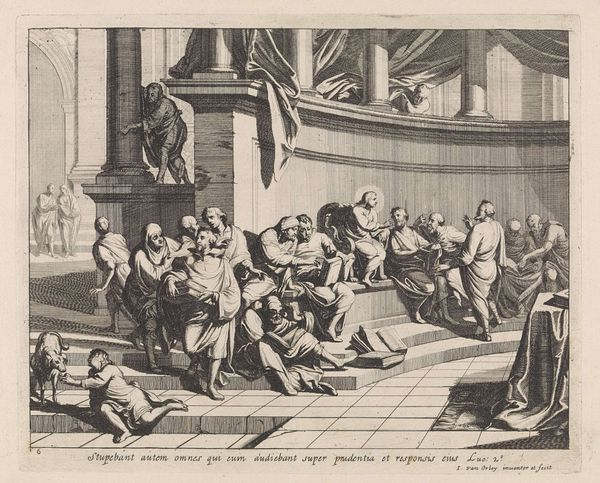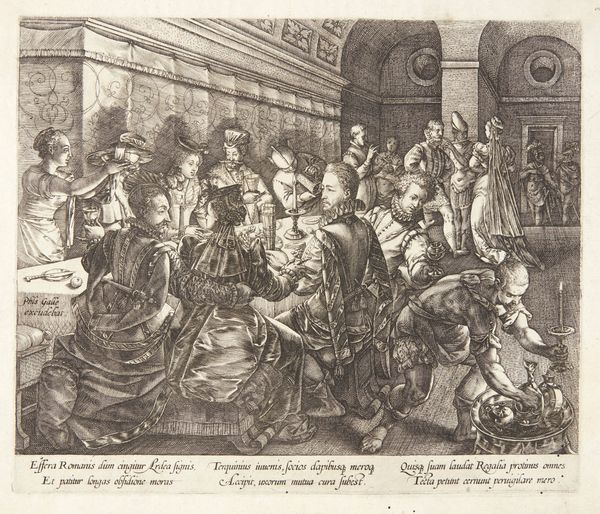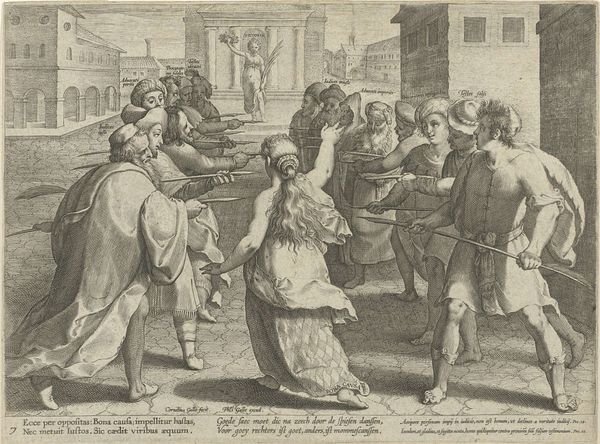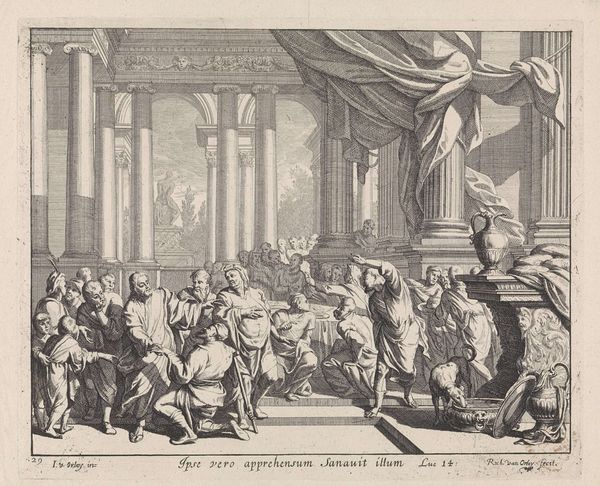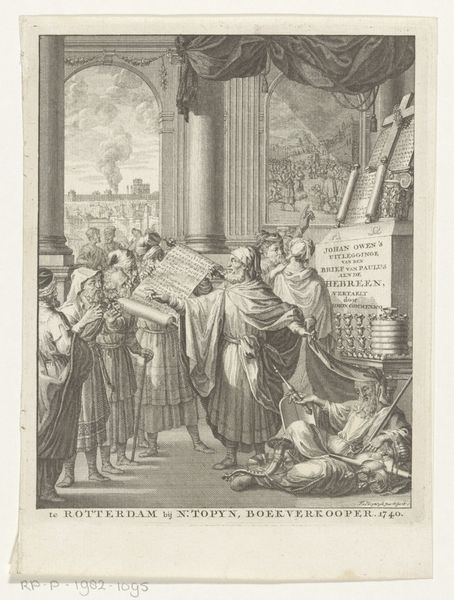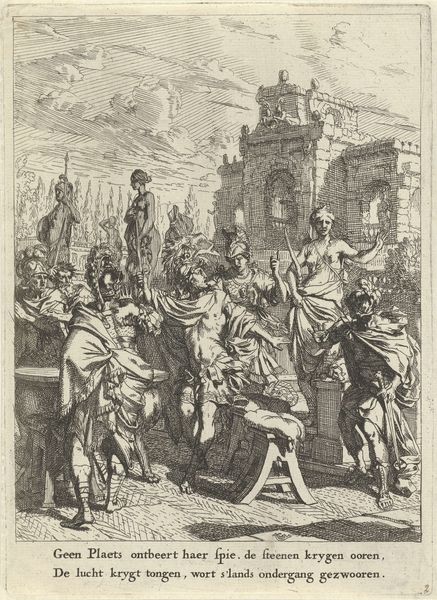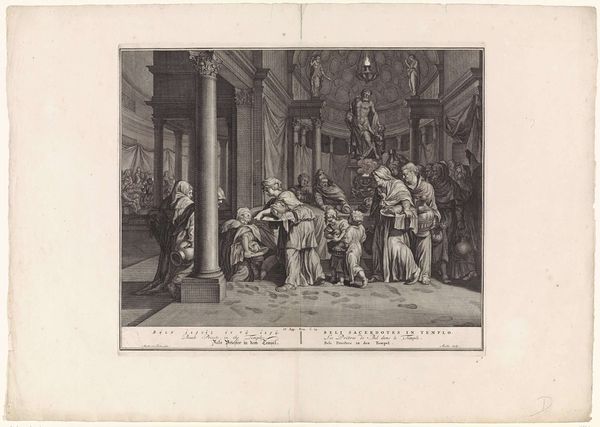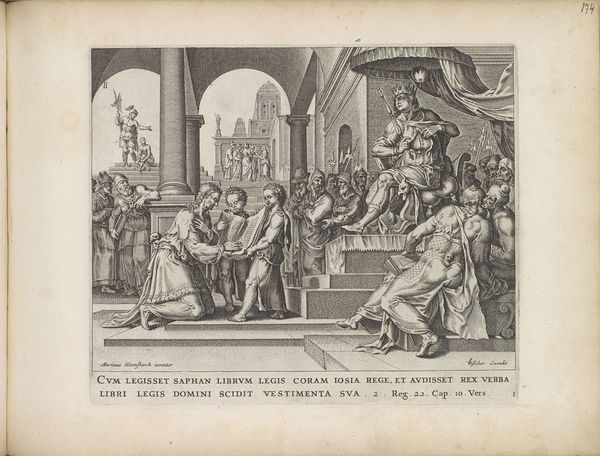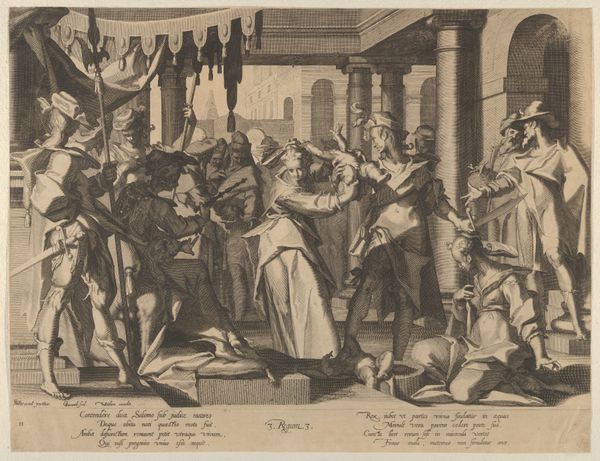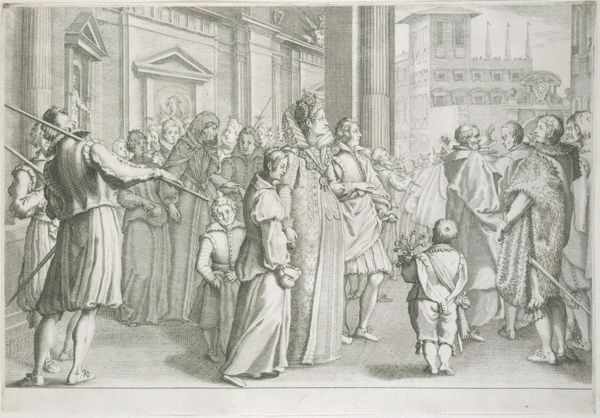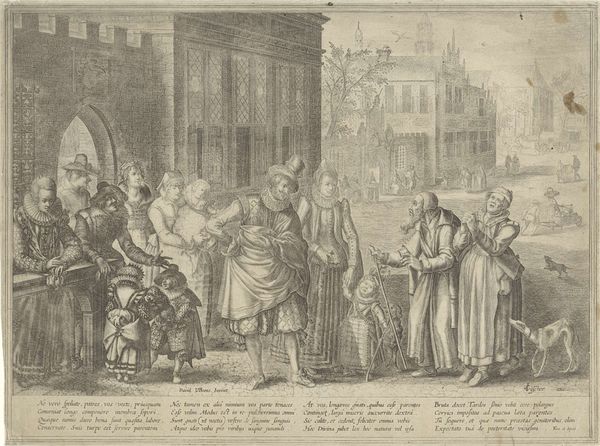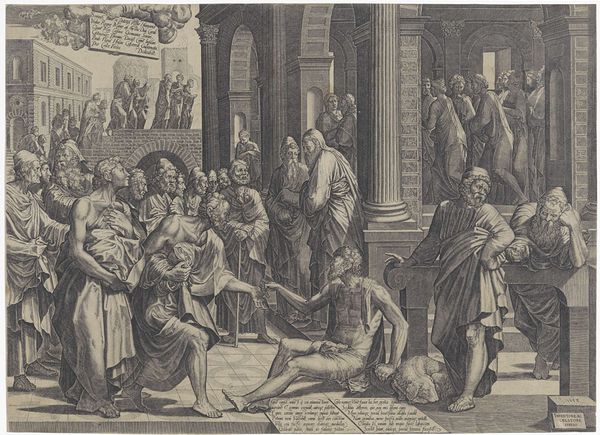
#
pencil drawn
#
comic strip sketch
#
light pencil work
#
pencil sketch
#
old engraving style
#
sketch book
#
personal sketchbook
#
sketchwork
#
pen-ink sketch
#
pencil work
Dimensions: height mm, width mm
Copyright: Rijks Museum: Open Domain
Curator: This densely populated scene is "Penning van de weduwe," or "The Widow's Penny," an etching that, despite being unsigned, is dated to 1643. What’s your first take? Editor: Stark, really. It’s the high contrast and overall composition; dark foreground figures encircling a lighter recess where alms are being given. Curator: This engraving captures a biblical moment—a poor widow donating two small coins and receiving recognition from Jesus while wealthier patrons give far more. It’s powerful for a number of reasons, one of which has to do with symbolic inversion. Editor: Inversion? Curator: Yes, precisely. The narrative subverts common perceptions of value, highlighting spiritual generosity over material wealth. The artist uses a technique to represent complex theological concepts through relatable imagery. Editor: True, that idea would certainly appeal within specific segments of the church as the Dutch Republic became a mercantile center. It's a well-established story meant to encourage charitable giving and, maybe even more, righteous behavior. How effectively do you think the artist used this composition to broadcast that kind of sentiment to 17th-century viewers? Curator: The visual hierarchy guides the viewer’s eye. You are drawn to Jesus at the center, calmly seated among those who judge the merit of material goods while the widow enters almost unannounced. It forces us to reflect on how our actions resonate beyond monetary measure, pointing toward humility and inner faith. Editor: Right, though it is tough to ignore that for a culture dealing with the unprecedented creation of capital and new markets this could easily come off as shaming rather than encouraging giving. Do you think that is reading too much of contemporary values into this print? Curator: It’s difficult to ignore the social climate from which any work emerges, but art of this period has a lot of power to connect across generations by dealing with persistent problems of wealth and class, and how human value is perceived relative to them. Editor: Understood, I guess it highlights the eternal question, then, of intention versus reception, especially when it becomes codified like this. Thank you for elucidating that, it gave me something to ponder.
Comments
No comments
Be the first to comment and join the conversation on the ultimate creative platform.

